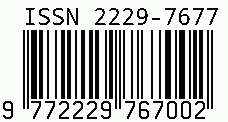
International Journal on Science and Technology
E-ISSN: 2229-7677
•
Impact Factor: 9.88
A Widely Indexed Open Access Peer Reviewed Multidisciplinary Bi-monthly Scholarly International Journal
Plagiarism is checked by the leading plagiarism checker
Call for Paper
Volume 16 Issue 3
July-September 2025
Indexing Partners



















PARTIAL REPLACEMENT OF CEMENT USING RICE HUSK ASH IN CONCRETE
| Author(s) | NIKHIL DIXIT, P BALAJI |
|---|---|
| Country | India |
| Abstract | Concrete usage worldwide is second only to water. OPC is conventionally used as the main binder in the production of concrete. The environmental issues mixed with the production of OPC. In addition, the energy required to produce OPC is only slightly more than that of steel and aluminum. Portland cement concrete is a combined substance of Portland cement, aggregates, and water. Concrete is the most commonly used construction material. Due to an increase in infrastructure development, the demand for concrete is expected to rise in the future demand. The production of Portland cement releases carbon dioxide, the highest level of contributor to greenhouse gas emissions in the atmosphere. The manufacture of every ton of Portland cement contributes approximately about one ton of CO2. Globally, the world’s Portland cement production contributes six percent of the global loading of carbon dioxide into the atmosphere. By 2012, the world's cement consumption rate had reached approximately 4,425 million tons, meaning that about 265.5 million tons of CO2 would be released. To address the environmental effects associated with Portland cement, there is a need to utilize alternative binders in the production of concrete. Globally, approximately 850 million tonnes of rice are harvested annually, with India producing around 160 million tonnes. On average of 30% of the rice crop is husk, presenting an annual total production of 160 million tonnes. This rice husk, when burnt, produces 32 million tonnes of Rice Husk Ash (20% approx.). In the majority of rice-producing countries, most of the husk produced during rice processing is either burned or discarded as waste. The specific objectives of this study were to compare the performance characteristics of concrete made with the partial replacement of cement by four different materials, as mentioned below. Different combinations of RHA mixtures, to levels of 10%, 15%, 20%, and 25%, with that of concrete made with no cement replacement at all |
| Keywords | Rice ask ash concrete, Cement, Silica Fume, |
| Field | Engineering |
| Published In | Volume 16, Issue 2, April-June 2025 |
| Published On | 2025-06-13 |
| DOI | https://doi.org/10.71097/IJSAT.v16.i2.6233 |
| Short DOI | https://doi.org/g9qqzk |
Share this


CrossRef DOI is assigned to each research paper published in our journal.
IJSAT DOI prefix is
10.71097/IJSAT
Downloads
All research papers published on this website are licensed under Creative Commons Attribution-ShareAlike 4.0 International License, and all rights belong to their respective authors/researchers.

